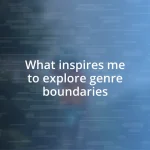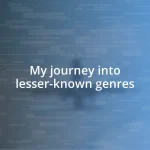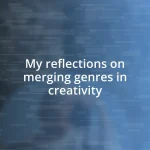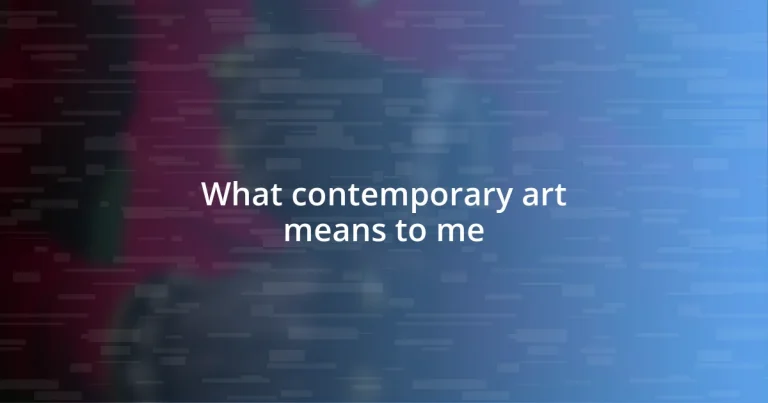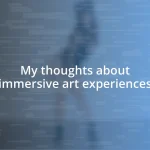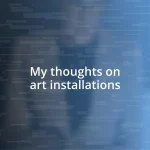Key takeaways:
- Contemporary art encourages introspection and dialogue, inviting viewers to explore emotions and challenge perceptions.
- Personal experiences with art, such as nostalgia and self-discovery, highlight the profound impact of contemporary pieces on individual identity and societal reflection.
- Art promotes self-expression and fosters community connections, empowering individuals to share their truths and challenge societal norms through creativity.
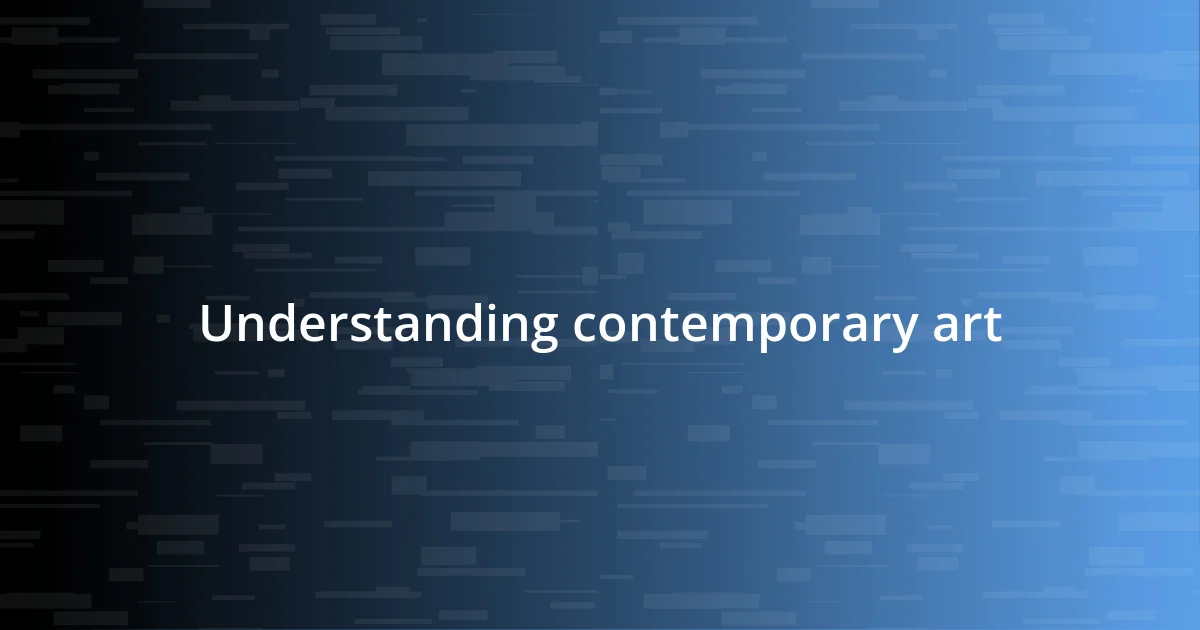
Understanding contemporary art
Contemporary art often challenges our perceptions and invites us to see the world through a different lens. I remember standing in front of a massive installation that was simply a room filled with white balloons. At first glance, it seemed trivial, but it made me ponder: what does it mean to feel inflated by our experiences and yet remain light? This is the essence of contemporary art—it encourages introspection and dialogue.
When I visit galleries showcasing contemporary pieces, I often feel a mix of confusion and curiosity. For instance, there was a painting that looked like a chaotic splash of colors, yet it resonated deeply with my own feelings of chaos in life. Was the artist expressing anxiety, joy, or something else entirely? That ambiguity pulls me in. It makes me realize that understanding contemporary art isn’t just about the piece itself but about the emotions and thoughts it stirs within us.
In my view, contemporary art thrives on pushing boundaries. Have you ever encountered a piece that made you uncomfortable? I once saw an artwork that dealt with societal issues through stark imagery. It unsettled me, but that discomfort forced me to confront realities I often evade. This emotional tug-of-war reveals the profound connection we can build with art, fostering a deeper understanding of ourselves and the world.
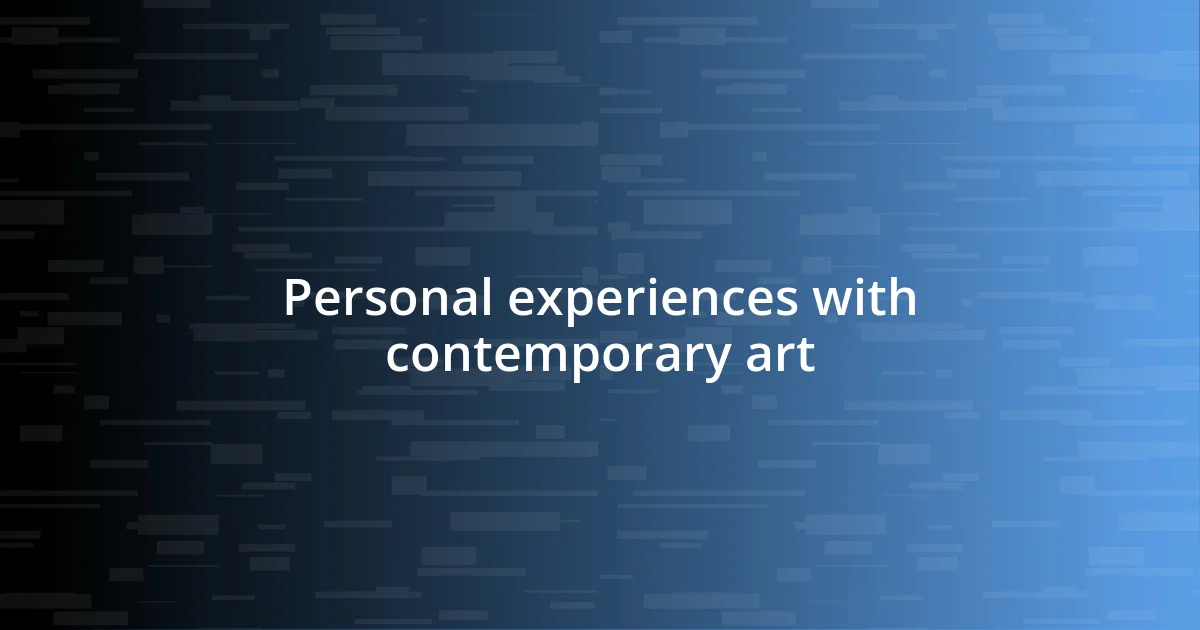
Personal experiences with contemporary art
I recall my first encounter with a contemporary art piece that left an imprint on my mind. It was a sculpture made entirely of recycled materials—old toys, tangled wires, and discarded gadgets. As I walked around it, I felt a wave of nostalgia wash over me. Each item seemed to tell a story of childhood joy and abandonment. In many ways, it urged me to reflect on my own past and the transient nature of our belongings.
One summer, I attended an outdoor contemporary art festival where artists showcased installations that merged nature and technology. I stumbled upon a giant tree adorned with LED lights that flickered like fireflies. Standing there, I couldn’t help but smile; the fusion of organic beauty and artificial light felt enchanting. It sparked a realization—contemporary art often blurs the lines between the real and the imagined, challenging us to appreciate different forms of beauty in our daily lives.
There was a time I felt lost in my life, unsure of my direction. During this period, I visited a gallery showcasing contemporary art focused on identity. One piece, a mirror fragmented into numerous shapes, forced me to see myself in pieces rather than as a whole. It struck me that our identities are often complex and multifaceted. This clarity, sparked by art, reshaped my understanding of who I am. It was both unsettling and liberating, emphasizing how contemporary art can serve as a profound tool for self-discovery.
| Experience | Reflection |
|---|---|
| Recycled Materials Sculpture | Nostalgia and transience of belongings |
| Outdoor Festival Installation | Fusion of nature and technology’s beauty |
| Fragmented Mirror Artwork | Understanding complex identities |
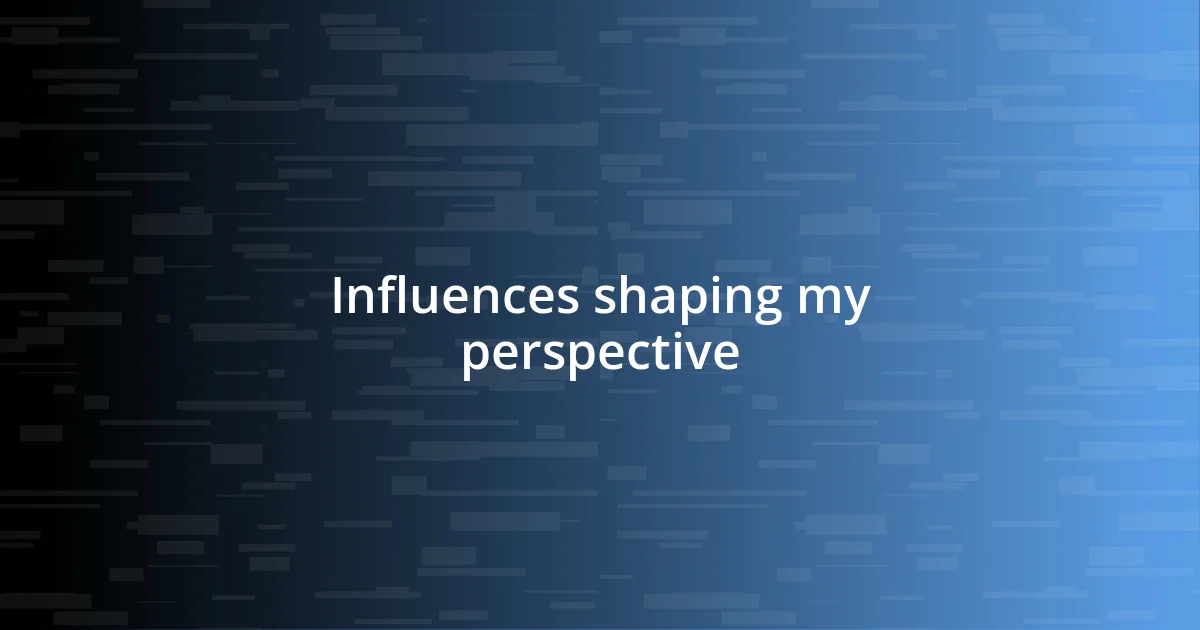
Influences shaping my perspective
There are numerous influences that have shaped my perspective on contemporary art, each adding layers to my understanding. One key influence is my background in literature; I often find myself drawing parallels between the narratives in books and the stories woven into artworks. For instance, I remember reading a poem about loss, and later seeing an artwork that depicted a broken window. Both evoked similar emotions, reminding me that art, in any form, speaks to the human experience.
- Literature deepens my appreciation of the narrative behind artistic expressions.
- Cultural experiences, such as traveling to different countries, expose me to diverse perspectives in art.
- Conversations with fellow art enthusiasts often shift my viewpoint, sparking new interpretations.
- Personal struggles, like coping with anxiety, have made me more receptive to artworks that explore vulnerability.
These influences intertwine, constantly reshaping how I perceive and engage with contemporary art. Each brings a unique texture to my appreciation, encouraging me to reflect, question, and connect more deeply with the world around me.
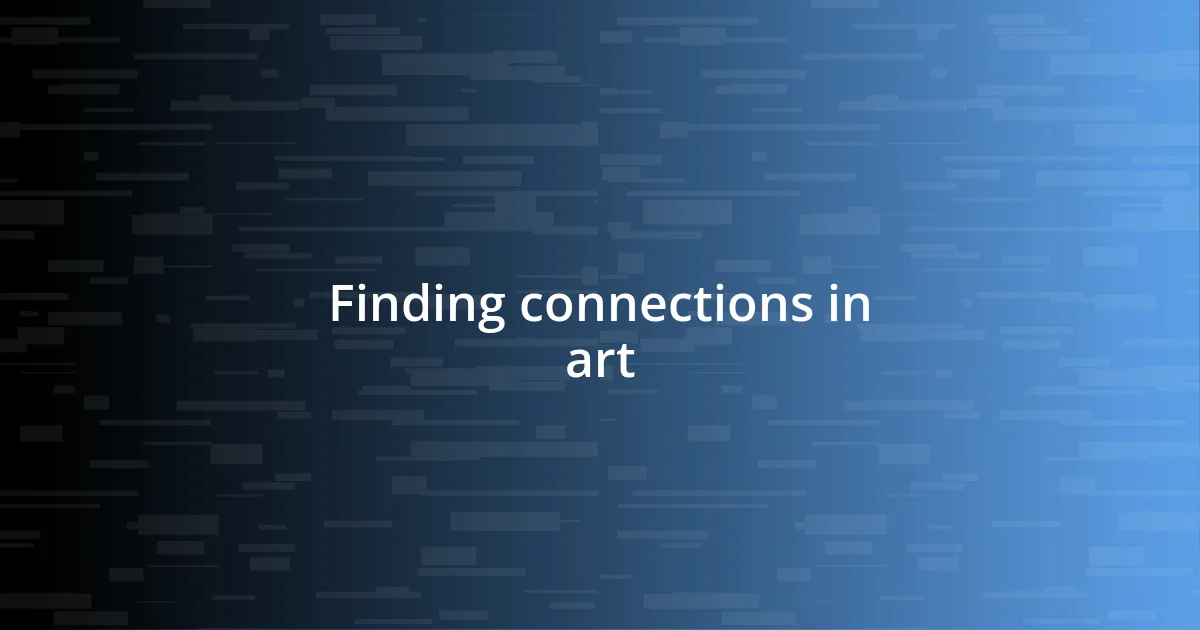
Finding connections in art
Art has an incredible way of bridging gaps between our inner world and the external environment. I remember standing in front of a large mural depicting a cityscape that felt eerily familiar yet completely foreign. As I stared at the vivid colors and exaggerated features, I found myself relating to the chaotic beauty of urban life. Could it be that the artist was reflecting my own feelings of both connection and isolation in the city? This realization made me appreciate how art can encapsulate our emotions and thoughts, sometimes even better than words can.
Sometimes, I discover connections with art that resonate with my daily life in unexpected ways. At a recent gallery showing, I was drawn to a series of small canvases that depicted everyday objects—a teacup, a worn-out shoe, a crumpled piece of paper. They seemed mundane, yet somehow they sparked a quiet reflection within me. Why do we overlook the beauty in the ordinary? This experience reminded me that art often encourages us to look closer at our surroundings and find value in things we might otherwise dismiss.
I’ve also had moments where art speaks to me on a deeply personal level, feeling almost like a conversation. I once encountered a video installation that portrayed individuals from various backgrounds sharing their childhood dreams. Listening to their hopes and laughter made me ponder my own aspirations. How much do our childhood dreams shape who we become? This connection enriches my understanding of the shared human experience and highlights the universal nature of emotions—further proving that, through art, we are never truly alone in our journeys.
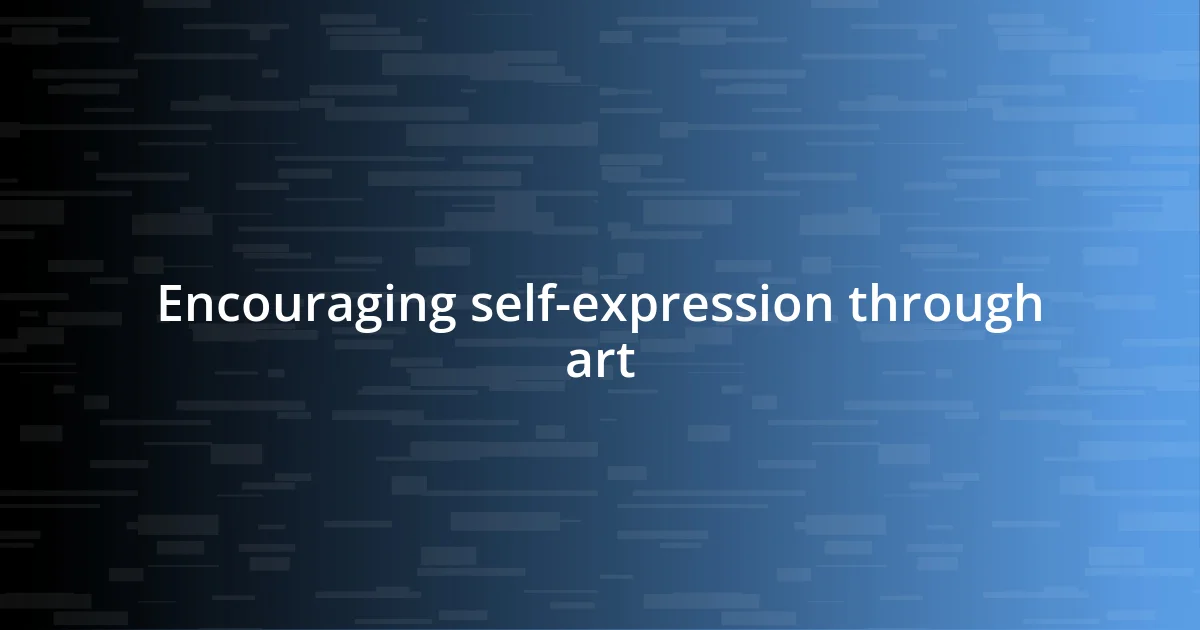
Encouraging self-expression through art
Art has a remarkable ability to push us toward self-discovery, inviting us to express emotions that might otherwise remain hidden. I recall a moment during a community art workshop when I decided to create a painting inspired by my childhood memories. As I mixed colors and layered textures, feelings of nostalgia and joy poured out onto the canvas. It was as if the act of creating opened up a channel to my innermost thoughts. Have you ever felt that surge of emotions when interacting with art? It’s a reminder that art can be a vessel for our most authentic selves.
In my experience, engaging with art can empower individuals to embrace their unique identities. I remember attending a local exhibit featuring LGBTQ+ artists who expressed their stories through striking visuals. The works resonated deeply, reflecting struggles and triumphs that echoed my own journey. I found myself thinking, how liberating it is to voice our truths through creativity! This connection to self-expression not only validated my emotions but also fostered a sense of community, reminding me that we all share a spectrum of experiences worth expressing.
Through self-expression, art often fuels conversations that challenge societal norms. I once visited an interactive installation that invited participants to write their thoughts on sticky notes, which were then displayed on a wall. Reading statements about love, loss, and hope sparked an inner dialogue for me. Why hold back our feelings when expressing them could illuminate our shared humanity? It was an empowering moment, realizing that through artistic expression, we can influence change and encourage others to do the same. Art becomes not just a personal outlet but a collective voice amplifying the beauty of our diverse experiences.




